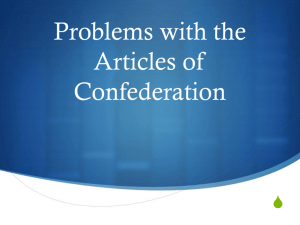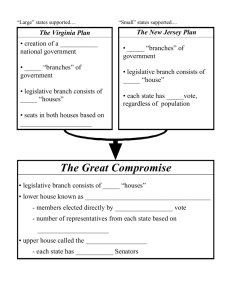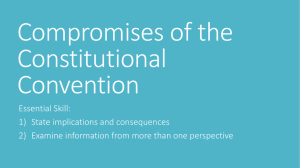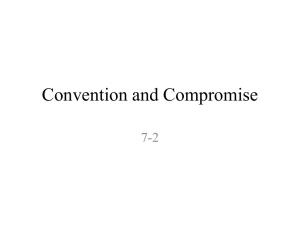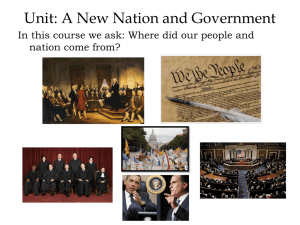Issue 1-Representation Read both plan and determine what you
advertisement
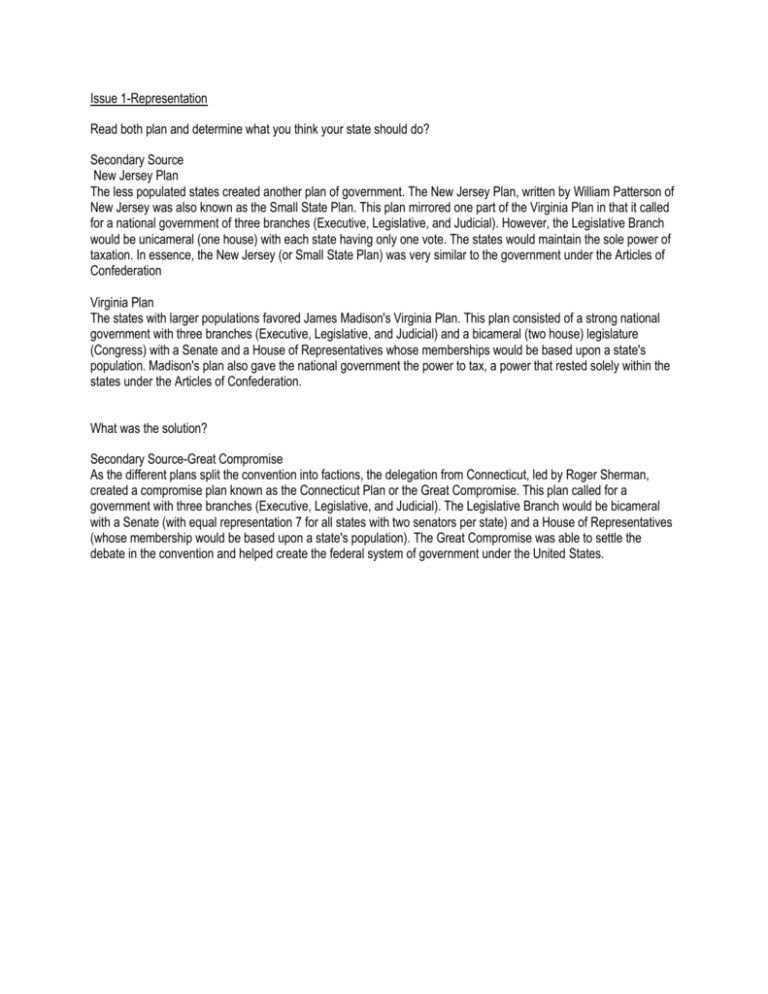
Issue 1-Representation Read both plan and determine what you think your state should do? Secondary Source New Jersey Plan The less populated states created another plan of government. The New Jersey Plan, written by William Patterson of New Jersey was also known as the Small State Plan. This plan mirrored one part of the Virginia Plan in that it called for a national government of three branches (Executive, Legislative, and Judicial). However, the Legislative Branch would be unicameral (one house) with each state having only one vote. The states would maintain the sole power of taxation. In essence, the New Jersey (or Small State Plan) was very similar to the government under the Articles of Confederation Virginia Plan The states with larger populations favored James Madison's Virginia Plan. This plan consisted of a strong national government with three branches (Executive, Legislative, and Judicial) and a bicameral (two house) legislature (Congress) with a Senate and a House of Representatives whose memberships would be based upon a state's population. Madison's plan also gave the national government the power to tax, a power that rested solely within the states under the Articles of Confederation. What was the solution? Secondary Source-Great Compromise As the different plans split the convention into factions, the delegation from Connecticut, led by Roger Sherman, created a compromise plan known as the Connecticut Plan or the Great Compromise. This plan called for a government with three branches (Executive, Legislative, and Judicial). The Legislative Branch would be bicameral with a Senate (with equal representation 7 for all states with two senators per state) and a House of Representatives (whose membership would be based upon a state's population). The Great Compromise was able to settle the debate in the convention and helped create the federal system of government under the United States. Issue 2-Slavery How do you think they should resolve it? The Background. Slavery was a topic of debate that threatened the hopes of a new federal constitution and the very union itself. Many southern states wanted their slaves to be counted as part of their population. This would give slave-holding states an advantage in the House of Representatives and in the Electoral College. The debate was settled with the Three-Fifths Compromise which allowed slaves to be counted as 3/5 of a free white person when the population of a given state was counted for representation purposes. What was the solution? The Three-Fifths Compromise settled the representation debate, but there were two other areas concerning slavery that were yet unsettled. Slave-holding states were worried that Congress may (in the future) have enough votes to illegalize the international slave trade. The delegates at the convention created the Slave Trade Clause which forbade Congress from voting against the international slave trade until 1808. The final slave debate focused on runaway slaves. Slave states wanted a guarantee that if caught, runaway slaves would be returned to their owner. The convention agreed to include the Fugitive Slave Clause in the Constitution which forced all states to return fugitive slaves to their owner.

